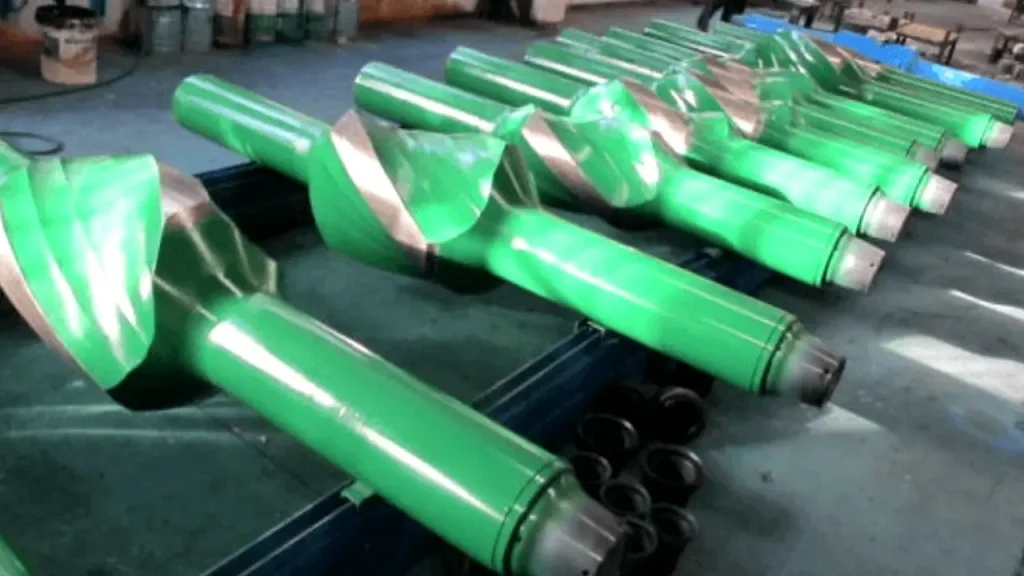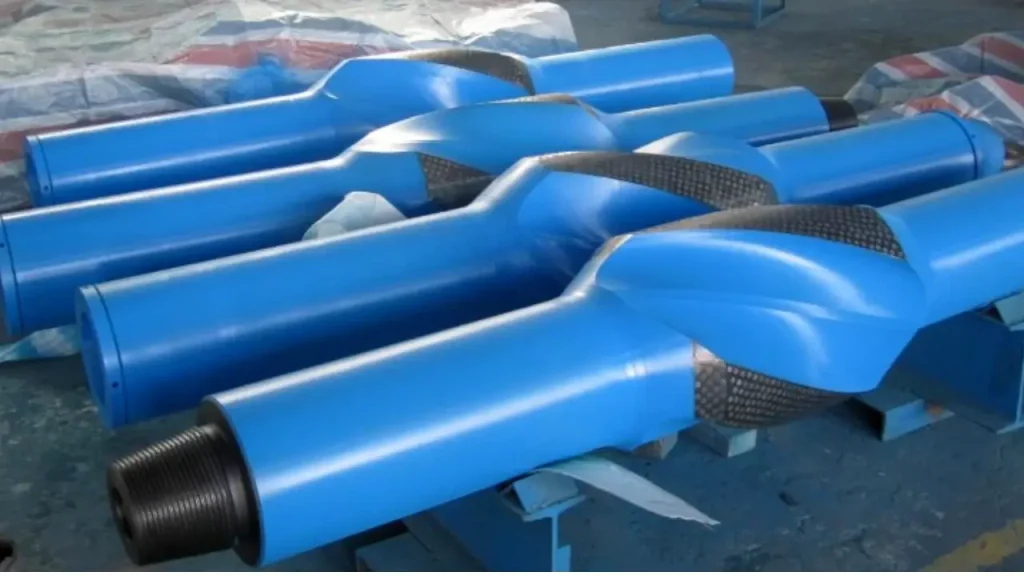Selecting the right drilling stabilizer is essential for efficient and safe drilling operations. Different types of stabilizers are designed to meet specific wellbore conditions, reduce vibration, and maintain precise directional control. Understanding the available options helps drillers optimize performance and extend the lifespan of drilling tools.
Choosing the appropriate stabilizer depends on factors such as borehole size, formation hardness, and drilling objectives. By evaluating these conditions, drillers can select a stabilizer that minimizes tool wear, enhances stability, and ensures consistent drilling efficiency. Knowledge of stabilizer types allows for better project planning and cost-effective drilling solutions.
What are Drilling Stabilizers?

Drilling stabilizers are essential downhole tools used in oil, gas, mining, and geothermal drilling to maintain wellbore stability and control the drill string’s trajectory.
They reduce vibration, prevent deviation, and minimize wear on drill bits, ensuring smoother, safer, and more efficient drilling operations while extending the lifespan of drilling equipment.
Drilling Stabilizer Types

Drilling stabilizers come in various types, each designed to meet specific wellbore conditions and drilling requirements. Choosing the right stabilizer ensures optimal wellbore stability, reduces vibration, and extends tool life. Understanding the differences between welded blade, integral, and other stabilizers helps drillers enhance performance, improve efficiency, and achieve precise drilling results.
Welded Blade Stabilizers
Welded blade stabilizers feature blades securely welded to the body of the tool. They provide reliable contact with the borehole, reducing lateral movement and vibration. Their design ensures consistent performance in a wide range of drilling environments, including oil, gas, and mining applications.
These stabilizers are highly durable and can be customized with different blade configurations to suit specific drilling conditions. Their robustness allows for extended tool life, minimizing downtime and maintenance costs while maintaining precise wellbore alignment throughout drilling operations.
Straight Blade Stabilizer
Straight blade stabilizers feature parallel, uniform blades attached to the stabilizer body. This simple yet reliable design provides consistent contact with the borehole wall, enhancing wellbore stability and reducing lateral deviation. They are commonly used in vertical or slightly deviated wells where predictable performance is essential.
These stabilizers are cost-effective, easy to manufacture, and require minimal maintenance. Straight blades offer moderate vibration reduction and basic directional control, making them suitable for oil, gas, mining, and geothermal drilling projects where formations are relatively stable and operations are straightforward.
Spiral Blade Stabilizer
Spiral blade stabilizers have twisted, helical blades that wrap around the stabilizer body. This design improves directional control, reduces torsional vibration, and enhances hole cleaning by promoting consistent drilling fluid flow along the borehole. Spiral stabilizers are ideal for complex, highly deviated, or horizontal wells.
The helical blade configuration helps maintain precise wellbore trajectories, minimizes tool wear, and extends drill string life. Spiral stabilizers are widely used in challenging formations, deep wells, and long-reach drilling projects where enhanced stability, reduced vibration, and improved drilling efficiency are critical to operational success.
Integral Stabilizers
Integral stabilizers are machined from a single piece of metal, offering maximum strength and durability. They provide excellent wellbore support, reducing vibration and directional deviation during drilling, making them ideal for challenging formations.
The single-piece design eliminates welded joints, reducing the risk of failure under extreme conditions. Integral stabilizers ensure smooth, consistent drilling performance, extend the life of the drill string, and improve overall operational safety and efficiency.
Sleeve-Type Stabilizers
Sleeve-type stabilizers consist of a central body with removable sleeves or blades. They allow easy replacement of worn components, making maintenance simpler and more cost-effective.
These stabilizers are versatile, enabling adjustments to blade configuration based on drilling conditions. Sleeve-type designs maintain wellbore stability and reduce vibration while offering flexibility for long-term use, ensuring reliable drilling performance across various applications.
How to Choose the Best Drilling Stabilizers
Selecting the right drilling stabilizer is key to efficient, safe, and cost-effective drilling. Various factors such as wellbore conditions, formation hardness, and drilling objectives must be considered to ensure optimal performance, reduce vibration, and extend tool life. The right choice improves overall drilling stability and operational efficiency.
- Consider Borehole Conditions: Evaluate the size, trajectory, and stability of the borehole. Choosing a stabilizer that matches these conditions reduces deviation, prevents tool wear, and ensures smooth drilling operations while maintaining precise control over the drill string. Proper matching enhances performance and safety.
- Material and Durability: Select a stabilizer made from high-quality materials such as alloy steel or specialized coatings. Durable materials withstand harsh drilling environments, resist corrosion, and provide longer service life, reducing downtime and maintenance while ensuring consistent performance in challenging conditions.
- Blade Design and Configuration: Assess blade type, spacing, and shape based on formation hardness and drilling objectives. A well-designed blade improves borehole contact, reduces vibration, enhances directional control, and increases drilling efficiency. Customizable blade designs optimize stability and tool life for specific projects.
- Connection Type: Ensure the stabilizer’s threads and connections are compatible with your drill string. Proper connection selection prevents operational failures, allows easy installation or replacement, and ensures safe, reliable drilling while minimizing downtime and maintaining consistent performance across different drilling projects.
Conclusion
Understanding drilling stabilizer types empowers you to select the most effective solution for your project. The right stabilizer enhances wellbore stability, reduces vibration, and ensures precise directional drilling, improving overall efficiency and safety. Investing in quality stabilizers prevents costly downtime and extends tool life.
Choosing a stabilizer that fits your specific drilling conditions is critical. By considering blade design, material, and connection types, you can achieve optimal performance in oil, gas, mining, or geothermal projects. Proper selection also reduces maintenance needs and ensures smoother, more reliable operations.
For wholesale drilling stabilizers, turn to Sinodrills. We offer durable, performance-optimized stabilizers designed for diverse drilling applications. With customizable options and strict quality control, our products deliver reliable results, longer tool life, and cost-effective solutions for all your drilling needs.


